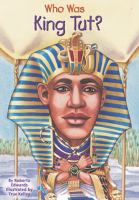Snack on Egypt-themed cookies (our local bakery does a super job designing things for us!) and juice while discussing the book for 15 minutes.
For last 30 minutes, divide into 2 groups. One group explores the pyramids using the Pyramids 3-D app on the iPads, while the other makes name cartouches using hieroglyphics.
As the boys came in, they made name tags and took cookies and juice. I also had dates out, but none of the boys (and only one of the parents) took them.
First I told them a little bit about the activities we had coming up, and I talked a little bit about hieroglyphics. Some of the boys had tried to make their name tags in hieroglyphics using their books as a reference, so I wanted to let them know that there were different interpretations for the different symbols because I was sure someone would notice the difference!
 Then we went through the discussion questions. All the boys (and parents) had read the book this time – I sent out an email about a week in advance with a gentle reminder. Everyone gave the book a thumbs up. We went around the circle and gave everyone (boys and parents) the chance to say something they learned from the book or something that surprised them. For the rest of the questions, the parents stayed pretty quiet except to help get the boys back on track when they wandered. (A lot of them wanted massive weaponry in their imaginary tombs.) We also talked a little bit about what explorers in 2000 years might think of the things we buried with us – a lot of electronics like iPads, iPhones, and video game systems whose function isn’t likely to be obvious once you can’t turn them on anymore. The discussion lasted about 20-25 minutes.
Then we went through the discussion questions. All the boys (and parents) had read the book this time – I sent out an email about a week in advance with a gentle reminder. Everyone gave the book a thumbs up. We went around the circle and gave everyone (boys and parents) the chance to say something they learned from the book or something that surprised them. For the rest of the questions, the parents stayed pretty quiet except to help get the boys back on track when they wandered. (A lot of them wanted massive weaponry in their imaginary tombs.) We also talked a little bit about what explorers in 2000 years might think of the things we buried with us – a lot of electronics like iPads, iPhones, and video game systems whose function isn’t likely to be obvious once you can’t turn them on anymore. The discussion lasted about 20-25 minutes.
We had seven boys and six iPads, but the kids were all friends, so two boys shared an iPad while the other five explored the Pyramids with their parents. This was what I think of as the ideal use of technology. Yes, there’s a “wow!” factor, but really it allowed them to explore in depth something that they would otherwise have no access to that deepened their understanding of ancient Egypt, the pharaohs, and the pyramids. Also, the five parent-child pairs were really engaged and interacting with each other about what they found. The kids were doing all of the hands-on manipulating, but the parents were talking with them about what they saw, helping to interpret and problem-solve. It was awesome. (In the pair where two boys were sharing an iPad, the kids worked together and the moms chatted. Not surprising, and not bad, but I felt better about the awesome parent-child interactions of the other pairs.) They were so engaged with the iPads that I had to kick them out of the room a little bit after the program was supposed to end. We never got to the hieroglyphic activity, so I spent the last few minutes circulating and handing out materials for the boys to do the project at home. I also gave extra papers to kids whose siblings might want to try.
Possible questions for discussion:
- What did you think of the book?
- What did you learn? Was there anything you thought you knew about King Tut that turned out to be wrong?
- The book talked about explorers coming in and raiding the tombs. There are currently Egyptian artifacts all over the world. Do you think that’s right? Who should own the artifacts and mummies from the tombs?
- The ancient Egyptians believed that the objects that were buried with you accompanied you to the afterlife. What would you want to be buried with?
- Tut’s world was very different from ours. Were there things about it that sounded better than today? Worse? If you had the choice, would you like to be born in ancient Egypt or in modern times?


Leave a comment